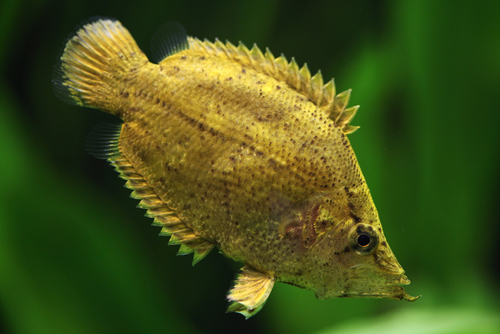Some of the most unique looking fish on the planet have names that start with the letter L, which isn’t all that surprising considering the fact that there are hundreds and hundreds of fish with names that begin with this letter.
Below share the names of 75+ popular fish that start with L and dig deep into 10 of the most unique fish with names that begin with this letter, too that would be a fitting match for your aquarium.
Let’s jump right in, shall we?
Contents
10 Popular Fish That Start with L
Learn more from other related posts:
- Popular Fish That Start with G
- Popular Fish That Start with D
- Popular Fish That Start With I
- Popular Fish That Start With N
1. Lumpsucker
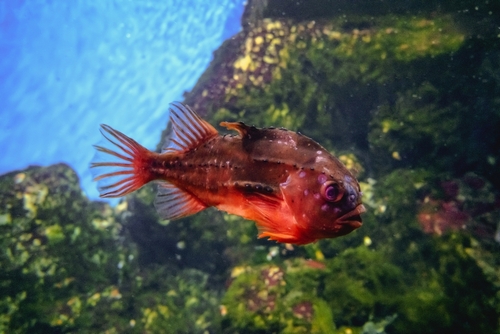
Lumpfish (also often referred to as lumpsuckers), and a multitude of different colors, usually different shades of blue, brown, and dark gray or black. 30 different species make up this family, with lumpsucker fish found all over the world in cold salt water conditions.
Generally considered to be pretty poor swimmers (at least as far as fish are concerned), they usually stay close to the bottom of the oceans that they reside in.
Salmon farmers worldwide like to keep lumpsuckers in the same enclosures with their commercially raised salmon, mostly because these fish will eat sea lice that would have otherwise devastated their salmon populations.
Though they are unique and beautiful to look at, it’s not a good idea to try and keep them in a home aquarium set up. They require some extreme water conditions (cold salt water) that can be next to impossible to maintain with any real consistency.
2. Longfin Dragonfish
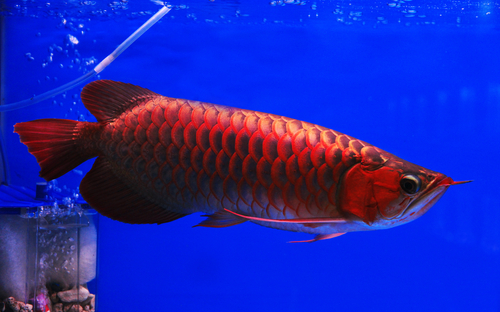
A smaller species of dragonfish (often only reaching about 14 inches in length), these fish are very predatory in nature – and that’s something you’re going to want to consider if you are going to add them to your aquarium.
Luckily though, these fish are generally slow-moving and have a tough time tracking down smaller, agile fish. You’ll want to really think about the kinds of tank mates you have sharing an aquarium with your longfin dragonfish.
3. Longneck Eel

Longneck eels have a very odd look to them, almost as though their neck has been screwed onto the rest of their body – with a very obvious “collar” about 1/3 of the way down their body from the tip of their snout.
A family of ray finned fish, these eels are often found hundreds of feet beneath the surface of the water – and oftentimes even deeper than that.
Most of the time these fish grow to be about 24 feet in length, but it’s not unusual or uncommon for these fish to grow even longer than that (particularly at deeper depths).
4. Loweye Catfish
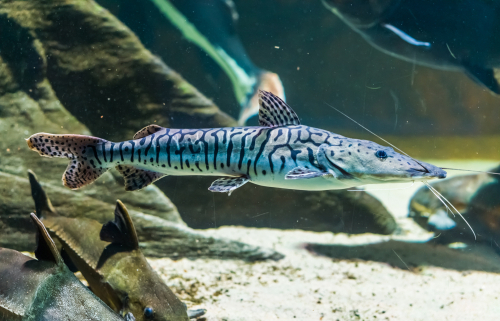
Native to the waters around South America, particularly in the Isthmian area, it isn’t at all unusual to find loweye catfish in Panama all the way up to the middle of Mexico.
A large sized family of catfish, your average loweye will reach sizes of close to 10 feet in length.
Because of their size they are beloved as a food source throughout South America, and the number of loweye catfish families today are a direct result of hybridization in an effort to grow even bigger commercial versions of these catfish.
Interestingly enough, these fish are also hugely popular with home aquarium keepers.
There’s a lot of controversy in the aquarium community about whether or not these fish should be kept in private aquariums because of their size – but hybrids generally make them quite a bit smaller and hardy enough to live in these kinds of captive conditions.
5. Lungfish
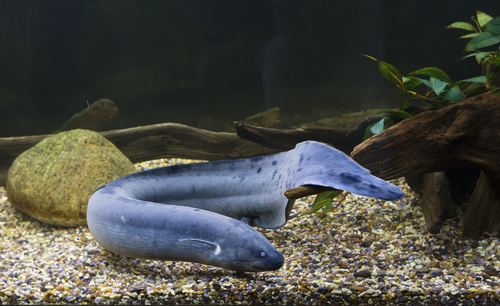
While different types of lungfish proliferated hundreds of millions of years ago, today there are only six species of lungfish still living in Africa, Australia, and South America today.
The fossil record, however, shows that lungfish were incredibly abundant since at least the Triassic Era. That’s when these fish really started to bubble up (literally) with their ability to breathe air above the surface of the water.
These fish have a very unique and specialized respiratory system, with lungs that are connected to both the larynx and the pharynx without any sign of a trachea.
Most of these fish have two lungs, though the Australian lungfish only has a single long. That Australian lungfish is the only one of the species that maintains the ability to breathe through its gills, too.
6. Light Fish
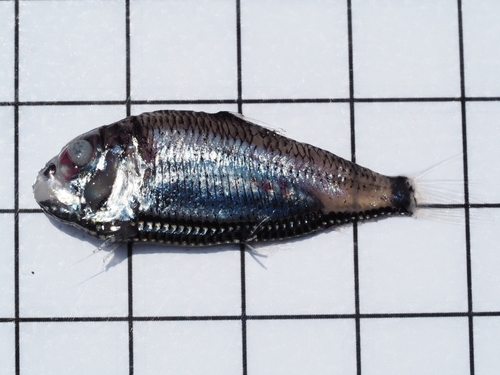
A relatively small family of fish, light fish (sometimes called bristle mouths or angle mouths) may only make up about 32 individual species of fish – but there are estimated to be trillions if not quadrillions of these fish in the oceans worldwide.
Called “light fish” because of their bioluminescence, these fish can actually control their natural glowing capabilities. Sometimes they’ll use their lights to scare off predators.
Sometimes they’ll use their lights to draw in prey. And sometimes they’ll use their lights to put on a little bit of a show in hopes of attracting a mate!
Foolishly small fish, they average and overall length at full maturity of about 75 mm – with nearly 10% of their full body length made up of their jaw alone.
Another curious quality of these fish is their ability to start life as a male and then flip later to become a female. They are natural hermaphrodites.
7. Lionfish
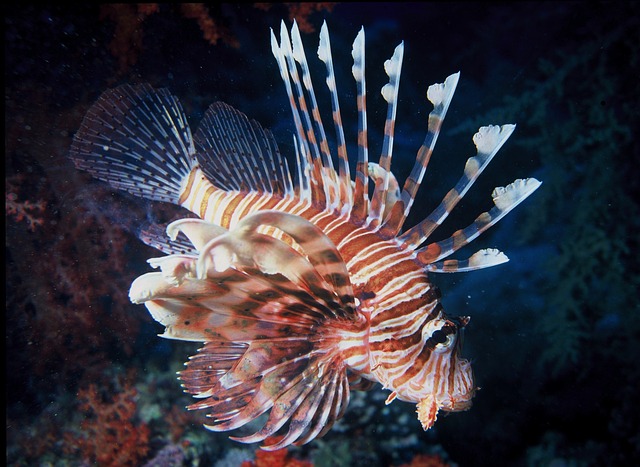
Though lionfish are undeniably gorgeous underwater creatures – with bold, vibrant maroon colors mixed in with brown and white stripes – they have no place in private aquariums.
These tropical fish traditionally swim in the South Pacific and Indian oceans, though they have started to invade more and more tropical waters as time goes on.
Bigger schools of lionfish have been found as far south as Australia and as far north as South Korea and their numbers continue to grow. Why shouldn’t these beautiful fish be kept in private aquariums, though?
Well, as gorgeous as they are they have the potential to be even deadlier with venomous spines and spikes that jump out of their bodies.
If you are stung by one of these fish you’re going to know it right away. The toxins on the spikes create intense pain straightaway, so much so that you will begin to sweat and ache instantly.
If you have an even worse reaction (or are stung multiple times, maybe even by multiple lionfish) it’s possible for paralysis to set in – and your respiratory system may seize up, too.
The nasty thing about these fish is that the spines stick right into your body and have to be ripped out and removed, though the toxin stays behind. The wound has to be soaked in water heated up to 114°F to break down the toxin. The treatment is almost as painful as the toxin itself!
8. Long-Finned Pike
The only member of its species and family, the long-finned pike (sometimes called a yellowfin pike) is a very long, very narrow fish that looks a lot like a barracuda.
Predominantly found naturally in the coastal waters of Australia (especially southern Australia, in and around New South Wales), these fish have bodies that allow them to live at depths as shallow as 16 feet under the surface of the water all the way down to 213 feet below the surface.
Capable of growing quite large (up to 33 inches in length), these fish are a favorite of game and sport anglers alike. In fact, spearfishing for long-finned pike is so popular in Australia that it’s a big part of the tourism throughout New South Wales.
9. Largemouth Bass
It’s difficult to imagine there being a more popular freshwater fish to go after for sport than the largemouth bass.
Fishing for largemouth is so popular, in fact, that there are major regional, national, and even international fishing tournaments that reward winners with hundreds of thousands of dollars (and sometimes hundreds of thousands more in gear, equipment, boats, and sponsorships).
A big part of why these fish are so fun to go after for sport is because of their attitude. These fish are always aggressive, always super active, and put up a decent fight when you are reeling them in – but they also don’t succumb to these kinds of “fights” the same way that other fish might.
Take one look at the fishing lure industry and you’ll see just how important these fish are to the sport and to the angler community!
Typically found in the eastern and central United States, though sometimes in southeastern Canada as well as North America, you can find largemouth bass in ponds, lakes, and large rivers. The current world record largemouth bass was recorded in 2009, weighing in at 22.5 pounds.
10. Lake Trout
Lake trout can be found in lakes and large ponds all over North America and are as popular a game fish as you’re going to find in the US today.
Because these fish are so popular (because they are so beloved as a food fish) they have been exported all over the world – especially into Europe as well as stretches of South America and even parts of Asia.
Technically in the char family, some people call lake trout mackinaws, gray trout, or lake char – but they are all the exact same fish.
These fish can grow to almost unbelievable sizes, with the world record currently weighing in at north of 102 pounds. That same fish grew to be 50 inches long – yes, 50 inches long! – though fish of that size certainly aren’t the norm.
Even still, it’s not at all unusual for these fish to go 15 pounds to 40 pounds on average and measure in at between 24 inches long and 36 inches long (2 to 3 feet).
A 72 pound monster was caught in the Great Bear Lakes in 1995, measuring 59 inches – and that one (believe it or not) was brought in on a standard rod and reel.
These fish love to swim in cold, heavily oxygenated waters. High temperatures really put a tremendous amount of stress on them, so it’s not odd for these fish to seek out deeper water just as soon as the temperature starts to rise.
One of the most unique things about these fish is that they almost effortlessly hybridize with other types of trout.
They especially like to crossbreed and hybridize with brook trout, and fisheries all across the United States and Canada raise these hybrids commercially to stock in their lakes for sport fishing opportunities.
65 More Popular Fish That Start with L
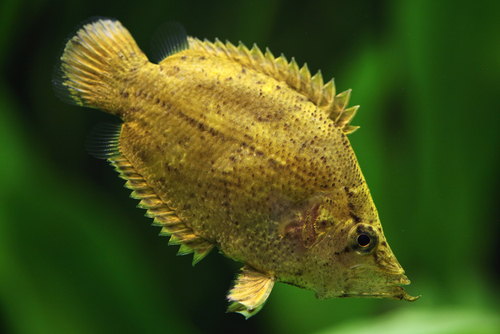
1. Longfin Escolar
2. Leporinus
3. Long Band Rasbora
4. Leeri Gourami
5. Loach Catfish
6. Lamprey
7. Longnose Chimaera
8. Longnose Dace
9. Longnose Whiptail Catfish
10. Liver Catfish
11. Livebearer
12. Leaffish
14. Letourneaux’s Jewel Cichlid
15. Linam’s Pimelodella
16. Loosejaw
17. Long Finned African Tetra
18. Lemon Cichlid
19. Le Conte’s Loach
20. Longjaw Mudsucker
21. Ling Cod
22. Loach Minnow
23. Lake Whitefish
24. Lefteye Flounder
25. Labyrinth Fish
26. Licorice Gourami
27. Lenok
28. Luderick
29. Lanternfish
30. Lesser Bleeding Heart Tetra
31. Leopard Ctenopoma
32. Linke’s Dwarf Cichlid
33. Lost River Sucker
34. Lemon Algae Eater
35. Lifalili Jewel Cichlid
36. Longnose Lancetfish
37. Limia
38. Lemon Shark
39. Ladyfish
40. Lake Chub
41. Loach
42. Longnose Sucker
43. Lancetfish
44. Leopold’s Angelfish
45. Loach Goby
46. Longfin
47. Lemon Tetra
48. Lemon Fin Barb
49. Lined Sole
50. Long-Whiskered Catfish
51. Leptosoma Cichlid
52. Longfin Smelt
53. Lizardfish
54. Lemon Sole
55. Leatherjacket
56. Lampfish
57. Laulao Catfish
58. Livingstoni
59. Ling
60. Luminous Hake
61. Lionhead Cichlid
62. Long-Finned Char
63. Long-Finned Sand Diver
64. Leleupi
65. Leopard Danio
66. Louvar

Ian Sterling, founder of Fishlab.com, began his aquarium journey over 30 years ago, driven by a deep fascination for fish and their diverse personalities. His website, Fishlab.com, is dedicated to making fishkeeping accessible and enjoyable, offering beginner-friendly guidance, expert insights, and a community for aquarists to connect and share experiences.


